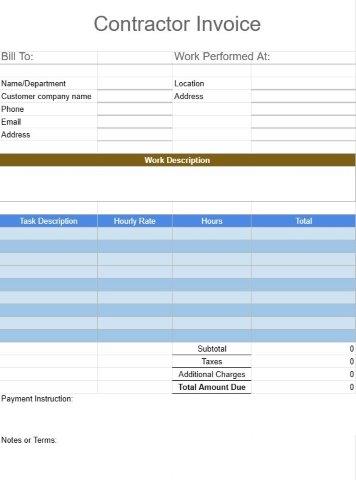

भर्ती 2
वर्ग : योजनाकारों
नौकरी की जानकारी टेम्पलेट पाठक को यह समझाने के लिए बहुत महत्वपूर्ण है कि नौकरी वास्तव में क्या है
भर्ती के लिए नौकरी सूचना दस्तावेज़ (जेआईडी) टेम्पलेट एक संरचित प्रारूप है जिसका उपयोग संगठनों द्वारा किसी विशिष्ट नौकरी भूमिका के बारे में व्यापक जानकारी संकलित करने के लिए भर्ती प्रक्रिया के दौरान किया जाता है। यह एक विस्तृत संदर्भ दस्तावेज़ के रूप में कार्य करता है जिसमें पद के बारे में सभी प्रासंगिक विवरण शामिल होते हैं, जिससे भर्ती करने वालों, भर्ती करने वाले प्रबंधकों और उम्मीदवारों के लिए भूमिका की जिम्मेदारियों, आवश्यकताओं और अपेक्षाओं को समझना आसान हो जाता है।
यहां प्रमुख घटक दिए गए हैं भर्ती के लिए नौकरी सूचना दस्तावेज़ (जेआईडी) टेम्पलेट के उद्देश्य और उद्देश्य:
- नौकरी का शीर्षक: स्थिति की सटीक पहचान करने के लिए नौकरी का शीर्षक स्पष्ट रूप से बताएं। सुनिश्चित करें कि शीर्षक संगठन की नौकरी संरचना और पदानुक्रम के साथ संरेखित हो।
- विभाग/प्रभाग: उस विभाग या प्रभाग को निर्दिष्ट करें जिससे पद संबंधित है। इससे उम्मीदवारों और आंतरिक हितधारकों को संगठनात्मक संरचना के भीतर भूमिका के स्थान को समझने में मदद मिलती है।
- रिपोर्टिंग संरचना: प्रत्यक्ष पर्यवेक्षक, किसी भी अधीनस्थ (यदि) सहित, संगठनात्मक पदानुक्रम में स्थिति के स्थान को इंगित करें लागू), और सहकर्मी भूमिकाएँ।
- कार्य सारांश/उद्देश्य: भूमिका के उद्देश्य, उद्देश्यों और प्राथमिक जिम्मेदारियों का संक्षिप्त लेकिन व्यापक अवलोकन प्रदान करें। इस अनुभाग को उम्मीदवारों और भर्तीकर्ताओं के लिए एक त्वरित संदर्भ के रूप में काम करना चाहिए।
- मुख्य जिम्मेदारियां और कर्तव्य: भूमिका से जुड़े मुख्य कर्तव्यों और जिम्मेदारियों को विस्तार से सूचीबद्ध करें। इस जानकारी को स्पष्ट रूप से प्रस्तुत करने के लिए बुलेट बिंदुओं या क्रमांकित सूचियों का उपयोग करें। विशिष्ट बनें और ऐसे किसी भी कार्य को शामिल करें जो पद के लिए अद्वितीय हो।
- योग्यताएं और आवश्यकताएं:
- शिक्षा: आवश्यक शैक्षिक निर्दिष्ट करें योग्यताएं, जैसे डिग्री, प्रमाणपत्र, या लाइसेंस।
- अनुभव: उम्मीदवारों से अपेक्षित प्रासंगिक कार्य अनुभव के न्यूनतम वर्षों का विवरण दें।
कौशल: भूमिका में सफलता के लिए आवश्यक आवश्यक कौशल, तकनीकी दक्षता और दक्षताओं की रूपरेखा तैयार करें। - पसंदीदा योग्यताएं: किसी भी अतिरिक्त का उल्लेख करें योग्यताएं या कौशल जो भूमिका के लिए फायदेमंद होंगे।
- मुख्य प्रदर्शन संकेतक (KPI): यदि लागू हो, तो इस भूमिका में कर्मचारी के प्रदर्शन मेट्रिक्स, लक्ष्य या उद्देश्यों का वर्णन करें हासिल करने के लिए जिम्मेदार होंगे. इससे उम्मीदवारों को यह समझने में मदद मिलती है कि उनकी सफलता कैसे मापी जाएगी।
- कार्य वातावरण: कार्य वातावरण के बारे में जानकारी प्रदान करें, जिसमें कार्यालय स्थान, यात्रा आवश्यकताओं और किसी विशेष स्थिति जैसे कारक शामिल हैं (उदाहरण के लिए) , खतरनाक सामग्रियों के संपर्क में)।
- वेतन और लाभ: मुआवजे के बारे में विवरण शामिल करें, जैसे वेतन सीमा, बोनस, लाभ (जैसे, स्वास्थ्य बीमा, सेवानिवृत्ति योजना), और कोई भी अन्य सुविधाएं या भत्ते. ध्यान दें कि कुछ संगठन भर्ती प्रक्रिया के अंत तक वेतन संबंधी जानकारी को गोपनीय रखना पसंद कर सकते हैं।
- आवेदन निर्देश: स्पष्ट रूप से बताएं कि उम्मीदवारों को पद के लिए कैसे आवेदन करना चाहिए। आवेदन की अंतिम तिथि, आवेदन जमा करने के लिए संपर्क जानकारी और आवश्यक कोई विशिष्ट दस्तावेज या जानकारी (उदाहरण के लिए, बायोडाटा, कवर लेटर, पोर्टफोलियो) जैसे विवरण शामिल करें।
- समान अवसर विवरण: भर्ती प्रक्रिया में विविधता और गैर-भेदभाव के प्रति संगठन की प्रतिबद्धता पर जोर देने के लिए एक समान अवसर विवरण शामिल करें।
- कंपनी अवलोकन: संगठन, उसके मिशन, मूल्यों का एक संक्षिप्त अवलोकन प्रदान करें , और संस्कृति। इससे उम्मीदवारों को अपनी आकांक्षाओं को कंपनी के लोकाचार के साथ संरेखित करने में मदद मिलती है।
- पोस्टिंग की तारीख: वह तारीख बताएं जब JID बनाया गया था या आखिरी बार अपडेट किया गया था। इससे उम्मीदवारों को भर्ती प्रक्रिया की समय-सीमा समझने में मदद मिलती है।
- अनुमोदन और समीक्षा: JID को मंजूरी देने और समीक्षा करने के लिए जिम्मेदार व्यक्तियों के नाम या पद निर्दिष्ट करें। यह नौकरी की सटीक जानकारी बनाए रखने में जवाबदेही सुनिश्चित करता है।
- अनुकूलन: JID टेम्पलेट्स को प्रत्येक नौकरी भूमिका और संगठन की विशिष्ट आवश्यकताओं से मेल खाने के लिए अनुकूलित किया जा सकता है। अनुभागों को आवश्यकतानुसार जोड़ा या संशोधित किया जा सकता है।
भर्ती के लिए नौकरी सूचना दस्तावेज़ (जेआईडी) टेम्पलेट का उपयोग करके, संगठन यह सुनिश्चित कर सकते हैं कि सभी हितधारकों के पास नौकरी की भूमिकाओं के बारे में लगातार और व्यापक जानकारी तक पहुंच हो। यह पारदर्शिता कुशल भर्ती प्रक्रियाओं को बढ़ावा देती है और उम्मीदवारों को उनके आवेदनों के बारे में सूचित निर्णय लेने में मदद करती है।
आसान पूर्वावलोकन और स्प्रेडशीट टेम्पलेट डाउनलोड करें
बिना किसी सीमा के स्प्रेडशीट टेम्प्लेट का पूर्ण संस्करण देखें, यदि आपको यह पसंद है तो आप इसे अपने डिवाइस पर संग्रहीत करने और मुफ्त में उपयोग करने के लिए एक्सेल टेम्प्लेट डाउनलोड कर सकते हैं।
कहीं से भी स्प्रैडशीट टेम्पलेट तक पहुंचें
यह सभी लोकप्रिय ऑपरेटिंग सिस्टम जैसे विंडोज़, मैकओएस, लिनक्स, आईओएस पर काम कर रहा है। आप स्प्रैडशीट टेम्प्लेट देख सकते हैं और उन्हें अतिरिक्त प्रोग्राम के बिना डाउनलोड कर सकते हैं।
टेम्प्लेट का उपयोग कैसे करें
उन चरणों का पालन करके पता लगाएं कि स्प्रेडशीट टेम्पलेट का पूर्वावलोकन, डाउनलोड और फिर उपयोग कैसे करें, जिनका पालन करना बेहद आसान है
अधिक समान टेम्पलेट्स
अधिक स्प्रैडशीट टेम्प्लेट देखें जो चुने गए टेम्प्लेट के समान श्रेणी के अंतर्गत हैं।















